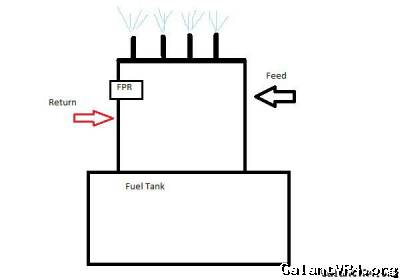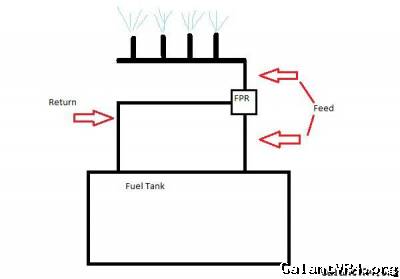Andy_S
Well-known member
Anybody run this setup? I'm building a fuel system currently and strongly considering a deadhead setup. For those that are unfamiliar, its basically where the fpr is located before the fuel rail. There is only one line feeding the rail. Here is some crudely made diagrams.
Traditional:

Deadhead:

Research indicated some potential pros and cons, although there is conflicting information out there.
Pros:
Fuel isn't heating up passing through the hot rail multiple times
Shorter distance for fuel to circulate
Less fittings and line required
Cleaner
Cons: (potential)
Rail needs to prime and displace air on start up
Vapor lock on hot start
Starve injectors further from feed
Requires 3 port FPR (most aftermarket are though)
Discuss
Traditional:
Deadhead:
Research indicated some potential pros and cons, although there is conflicting information out there.
Pros:
Fuel isn't heating up passing through the hot rail multiple times
Shorter distance for fuel to circulate
Less fittings and line required
Cleaner
Cons: (potential)
Rail needs to prime and displace air on start up
Vapor lock on hot start
Starve injectors further from feed
Requires 3 port FPR (most aftermarket are though)
Discuss











